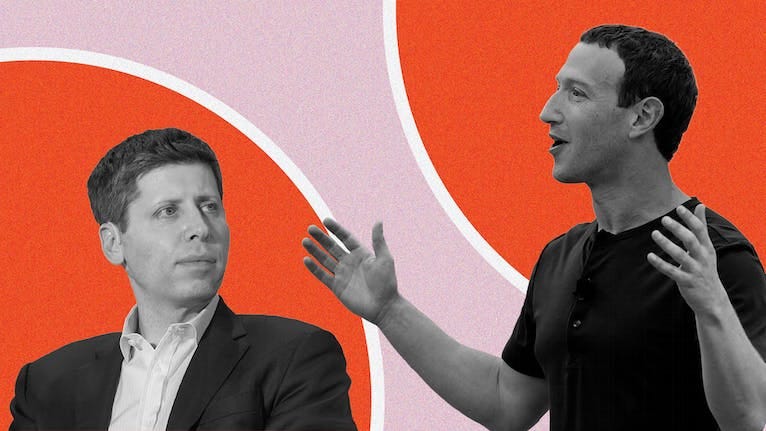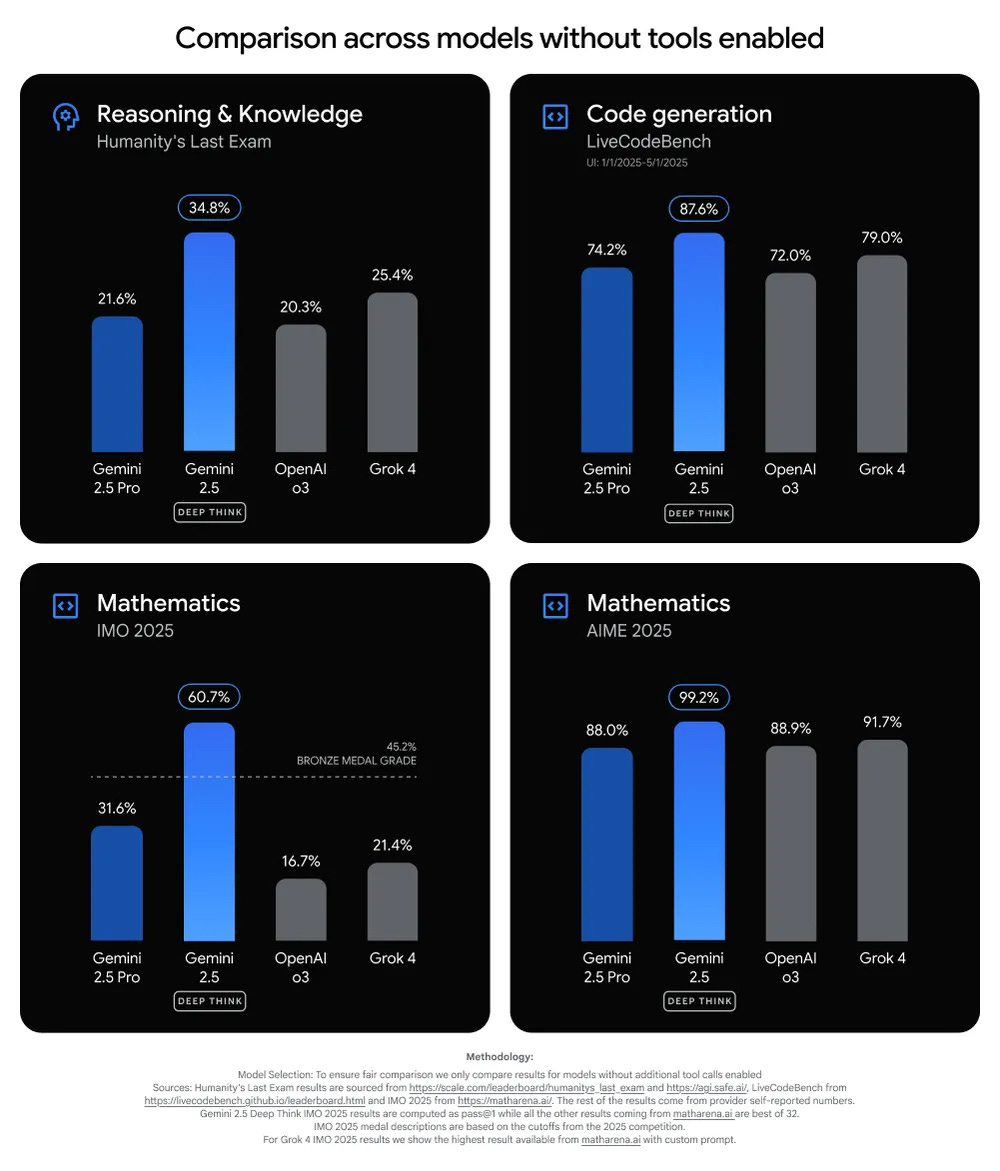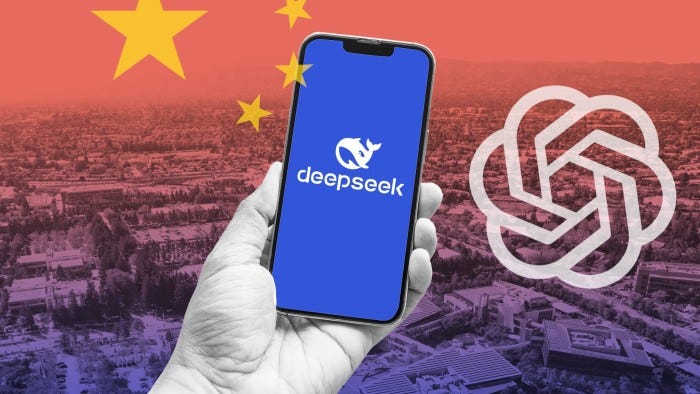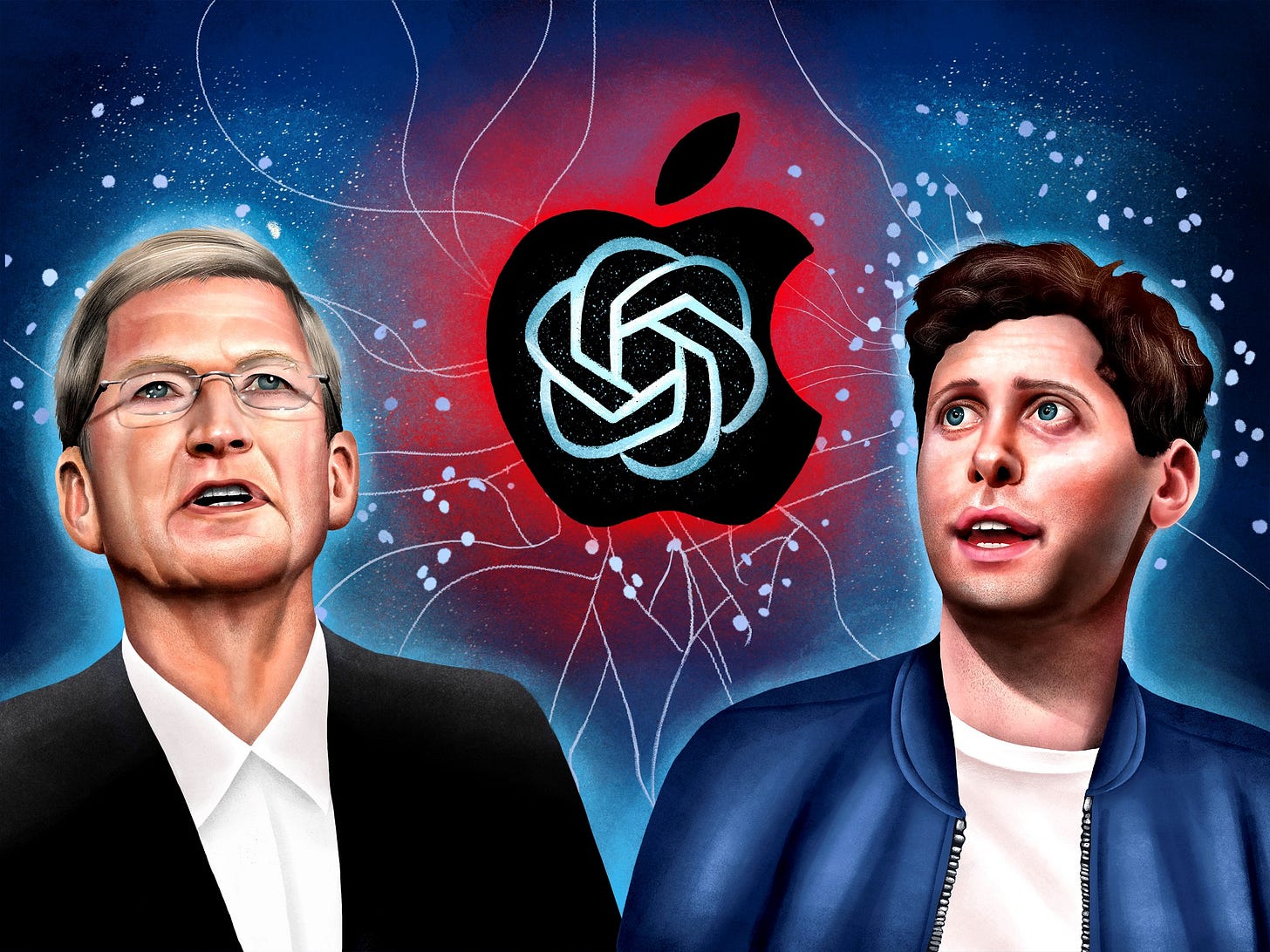
AI: OpenAI ramps into 'open-weight' AIs. RTZ #805
OpenAI now has its open weight (a lesser form of open source) strategy picking speed up the global hill.
The distinction between the two is important to understand, as the Information explains:
“‘open-weight’ is different from “open-source”: an open-source model lets developers freely access its weights, or the settings that control how it responds to questions, as well as its code and its training data. Open-weight models only let developers access—you guessed it—its weights.”
“That’s similar to China’s DeepSeek and many of Meta’s Llama models.”
“Releasing these models as open-weight makes a lot of sense for OpenAI. First, the ChatGPT maker can get brownie points from developers and the U.S. government for providing an impressive alternative to Chinese-made open-weight models. Lots of developers I spoke to said that the performance of OpenAI’s new models matched or surpassed Chinese ones, while being significantly smaller and easier to run than some of the most popular Chinese models such as DeepSeek-V3.”
And here is what OpenAI is trying to achieve with ‘open-weight’ at the low end of their product strategy vs LLM AI competitors as it gets ready to launch GPT-5 at the high end. As well as counter rising open source AI competition from China’s private tech/AI companies.
“But these releases aren’t just about building a Boy Scout reputation for OpenAI. They’re also a risky—but smart—bet that these releases could help to take down its rivals. Specifically, Altman is taking a page from his rival Mark Zuckerberg, whose Meta Platforms released Llama as an open-weight model so developers wouldn’t want to pay for models from Meta’s rivals.”
“Ironically, now Meta is the company most threatened by OpenAI’s recent open-weight release. Meta’s most recent Llama release was seen as disappointing, prompting it to go on an AI researcher hiring spree.”
Yes, that hiring spree.
We now have two major US companies offering open source LLM AI models, with OpenAI joining Meta’s Llama in the fray. That’s ironic since Meta MAY go the other way soon in this AI Tech Wave. Potentially offering a closed source version of its LLM AI models. All this while China over there seems to have gone open source across most of its AI industry.
And all the LLM AI companies everywhere, are all offering next generation versions and features of its LLM AIs (large language AI models) at a breakneck speed this summer. That includes Google, Anthropic, in the fray with the other two mentioned above.
But for today, let’s look at OpenAI’s open ‘source’ move, especially on the ‘Small AI’ front, with an open source GPT/ChatGPT model that could run on an iPhone, or Google Android smartphone.
WIred explains it all in “OpenAI Just Released Its First Open-Weight Models Since GPT-2”:
“The models, gpt-oss-120b and gpt-oss-20b, represent a major shift for the AI company.”
“OpenAI just dropped its first open-weight models in over five years. The two language models, gpt-oss-120b and gpt-oss-20b, can run locally on consumer devices and be fine-tuned for specific purposes. For OpenAI, they represent a shift away from its recent strategy of focusing on proprietary releases, as the company moves towards a wider, and more open, group of AI models that are available for users.”
“We’re excited to make this model, the result of billions of dollars of research, available to the world to get AI into the hands of the most people possible,” said OpenAI CEO Sam Altman in an emailed statement. Both gpt-oss-120b and gpt-oss-20b are officially available to download for free on Hugging Face, a popular hosting platform for AI tools. The last open-weight model released by OpenAI was GPT-2, back in 2019.”
“What sets apart an open-weight model is the fact that its “weights” are publicly available, meaning that anyone can peek at the internal parameters to get an idea of how it processes information. Rather than undercutting OpenAI’s proprietary models with a free option, cofounder Greg Brockman sees this release as “complementary” to the company’s paid services, like the application programming interface currently used by many developers. “Open-weight models have a very different set of strengths,” said Brockman in a briefing with reporters. Unlike ChatGPT, you can run a gpt-oss model without a connection to the internet and behind a firewall.”
And that there are both big and small versions of OpenAI’s AI software:
“Both gpt-oss models use chain-of-thought reasoning approaches, which OpenAI first deployed in its o1 model last fall. Rather than just giving an output, this approach has generative AI tools go through multiple steps to answer a prompt. These new text-only models are not multimodal, but they can browse the web, call cloud-based models to help with tasks, execute code, and navigate software as an AI agent. The smaller of the two models, gpt-oss-20b, is compact enough to run locally on a consumer device with more than 16 GB of memory.”
And these models will run on Nvidia AI infrastructure, from large to small, from the US to China:
OpenAI is using the popular Apache licensing version for its open source offerings:
“The two new models from OpenAI are available under the Apache 2.0 license, a popular choice for open-weight models. With Apache 2.0, models can be used for commercial purposes, redistributed, and included as part of other licensed software. Open-weight model releases from Alibaba’s Qwen as well as Mistral also operate under Apache 2.0.”
“Publicly announced in March, the release of these open models was initially delayed for further safety testing. Releasing an open-weight model is potentially more dangerous than a closed-off version since it removes barriers around who can use the tool, and anyone can try to fine-tune a version of gpt-oss for unintended purposes.”
A lot of testing has been done to date, and to be continued.
“In addition to the evaluations OpenAI typically runs on its proprietary models, the startup customized the open-weight option to see how it could potentially be misused by a “bad actor” who downloads the tool. “We actually fine-tuned the model internally on some of these risk areas,” said Eric Wallace, a safety researcher at OpenAI, “and measured how high we could push them.” In OpenAI’s tests, the open-weight model did not reach a high level of risk, as measured by its preparedness framework.”
“How do these models perform compared to OpenAI’s other releases? “The benchmark scores for both of these models are pretty strong,” said Chris Koch, an OpenAI researcher, in the briefing. Speaking about gpt-oss-120b, the researcher compared its performance as closely similar to OpenAI’s o3 and o4-mini models, which are proprietary, and even out-performing them in certain evaluations. The model card for gpt-oss goes into detail about how exactly it stacks up to the company’s other offerings. In a pre-launch press briefing, staff members of OpenAI also focused on the latency offered by gpt-oss and the cheaper cost to run these models.”
And China of course is part of this global landscape:
“At the beginning of this year, the Chinese startup DeepSeek stunned Silicon Valley with the release of its cheap-to-run model that was open-weight. While the release blog about gpt-oss does not mention DeepSeek or any other Chinese AI company directly, Altman is clear that he wants innovation around open-weight models to happen in the United States. “Going back to when we started in 2015, OpenAI’s mission is to ensure AGI that benefits all of humanity,” said Altman in a statement. “To that end, we are excited for the world to be building on an open AI stack created in the United States, based on democratic values, available for free to all and for wide benefit.”
The US situation now of course is Meta and OpenAI in open source, as mentioned above. With China in the rear-view mirror:
“In the US, the open-weight leader has been Meta. The tech giant released the first of its Llama series of models back in 2023, with Meta’s most recent release, Llama 4, arriving a few months ago. With that in mind, Meta is currently hyper-focused on building AI that can surpass human cognition, often called superintelligence by AI insiders. The company recently launched a new, internal lab focused on this lead by Alexandr Wang, the former CEO of Scale. Mark Zuckerberg has signaled that the company may move away from open-source for future models, citing potential safety concerns.”
“The gpt-oss release also comes as the AI talent war between companies, like OpenAI and Meta, continues to ramp up. In 2025, AI researchers who have in-demand talents are being presented with astronomical offers to switch companies. The latest releases from OpenAI could be stiff competition for Meta, depending on how the gpt-oss models are received by developers.”
It’s an important move by OpenAI, especially with its industry leading partnership with Apple to deliver ChatGPT to over two and a half billion Apple product users globally. It remains to be seen if Apple adopts the OpenAI open source model in its bottom up Apple Intelligence offering across its applications and services on iPhones, Macs, iPads and more. And in its Cloud strategy.
Another benefit for OpenAI with its new ‘open’ products is getting distribution on other cloud providers besides industry #2 Microsot Azure, its core distribution partner. #1 Cloud provider Amazon Azure plans to make OpenAI’s gpt-oss open weight models on its Bedrock and SageMaker products. Expect the OpenAI oss models to be available on more cloud providers soon.
Overall, OpenAI’s ‘oss’ strategy is to use the ‘open-weight’ models to compete better with ‘open-source’ LLM AI models. From the US, China and elsewhere. Again, it helps them in the battle at the low end, while they speed on to deliver GPT-5 in the high end soon.
But it’s clear that open and closed source LLM AIs, and their stripped down ‘open-weight’ forms, are both blending and blurring into commercial offerings for billions of users everywhere. Everyone’s in the fray, from every direction. And that is a promising at this stage of the AI Tech Wave. Stay tuned.
(NOTE: The discussions here are for information purposes only, and not meant as investment advice at any time. Thanks for joining us here)















